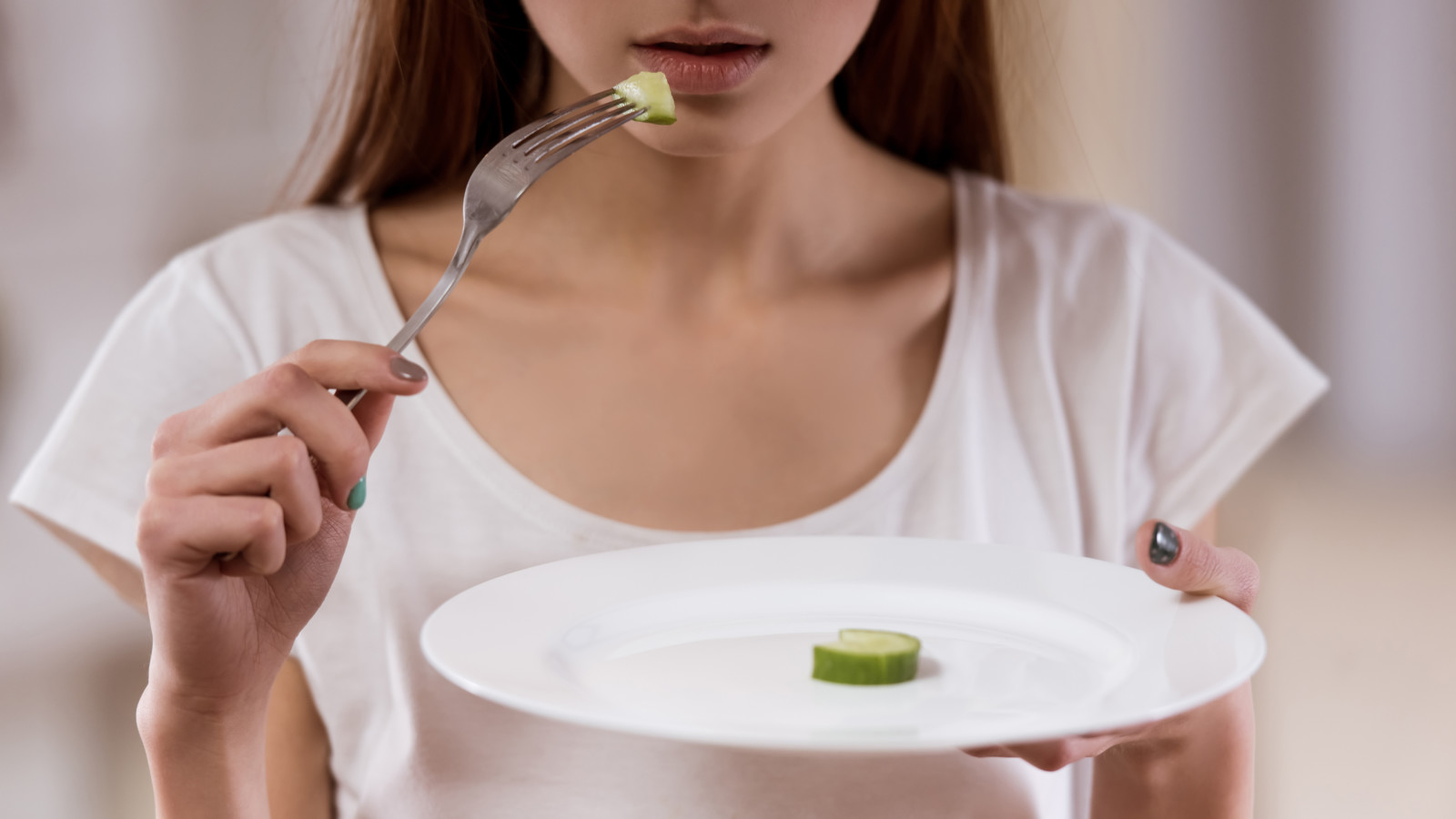I had my first panic attack when I was just six years old. It came right after we ate take-out from a new restaurant. Even though everyone else was fine, I was convinced I’d been poisoned.
I had the same thought about two weeks ago, more than 40 years later.
I don’t know where my intrusive thoughts come from—I just know they used to terrify me and cause panic attacks. Now I acknowledge and dismiss them as mild annoyances. Sometimes I even laugh and think, “What the hell?”
I went on my first diet when I was 12 years old. I wasn’t overweight, but my mother was, and she brought me to Weight Watchers with her to bond over our weight-loss journeys. I was too young to be criticizing my thighs, but body positivity wasn’t part of our social consciousness yet. Two very dangerous seeds were planted in me that summer: a false sense of control and perfection as a place to hide. This is when my disordered eating developed.
Research shows that 20 million women and 10 million men have or have had an eating disorder during their lives, and it also suggests that an astonishing two-thirds of people with an eating disorder also suffer from an anxiety disorder.
As I grew and my anxiety intensified, the loss of control over my body and mind created a manic need to control everything else. According to psychologist Paul Davidson, PhD, director of behavioral services at the Center for Metabolic and Bariatric Surgery at Brigham and Women’s Hospital in Boston, “In anxiety… there’s a loss of some sense of control. The ability to have a sense of control over eating behavior can reduce the anxiety momentarily.”
I was drowning in my anxiety and turned to my weight to find relief.
I was also desperate to hide my symptoms behind what looked like a perfect exterior, so I was killing two birds with one big, destructive stone. The lines blurred over time, and my deprivation diet became a form of self-flagellation. If I had a panic attack, I skipped a meal. If I felt generally anxious, I refocused on losing more weight to gain back control. And socially, I felt less exposed and vulnerable when I was thin because thin people were perceived to be in control of everything.
Looking back I realize that my issue was always bigger than weight loss. It was primarily about controlling what I looked like on the outside to hide that I was unraveling on the inside. Over time, eating anything gave me anxiety. I didn’t know what or when to eat and feared my weight loss would vanish with the slightest number of calories. Eating anything symbolized a lack of control and caused anxiety. At the same time, not eating triggered panic attacks. I was being torn apart at the seams. When I was finally a size two, I could no longer stand being in my own skin.
And the numbers don’t lie: My experience seems to be common given the issues at play here. A control study from the Journal Acta Psychiatrica Scandinavica revealed that for 90% of women with anorexia nervosa and 94% of women with bulimia nervosa, anxiety disorders preceded their eating disorder.
I didn’t come to terms with my own struggle until I witnessed my mother’s struggle with her weight finally end. She developed chemotherapy-induced anorexia during her final days with pancreatic cancer. When her clothes started falling off, we shopped together for a new wardrobe. Riffling through the racks felt very different from when we used to triumphantly do the same thing after those Weight Watcher meetings. Now she had no choice, and the new clothes brought no joy. We smiled awkwardly and made jokes about those first diets to lighten the mood, both knowing that what we bought that day was the size she would be buried in. I saw then that this destructive relationship and battle needed to end—not because I’d finally won, but because I realized there was never any war to fight.
As I shifted my focus to my mental health, becoming more self-aware than self-destructive, more curious and compassionate than critical, I began managing my weight with self-love rather than self-loathing. I realized that temporarily soothing my anxiety with this crutch and false sense of control kept me from forming the deep connection with myself that comes from actually sitting with the anxiety, rather than avoiding it, and discovering what’s on the other side.
This is a tangled web, shared by many, but it can be untangled with time and attention. Eating disorders and anxiety disorders should be addressed independent of each other until they are under control.
Here are some resources for information on eating and anxiety disorders:
- The National Eating Disorders Association (NEDA) offers a helpline (800-931-2237) and screening tool that can direct you to professional help. They can also help you find free and low-cost support.
- The Anxiety and Depression Association of America can help connect you to a therapist or behavioral health treatment center in your area.
- BetterHelp provides affordable, private online counseling services.


